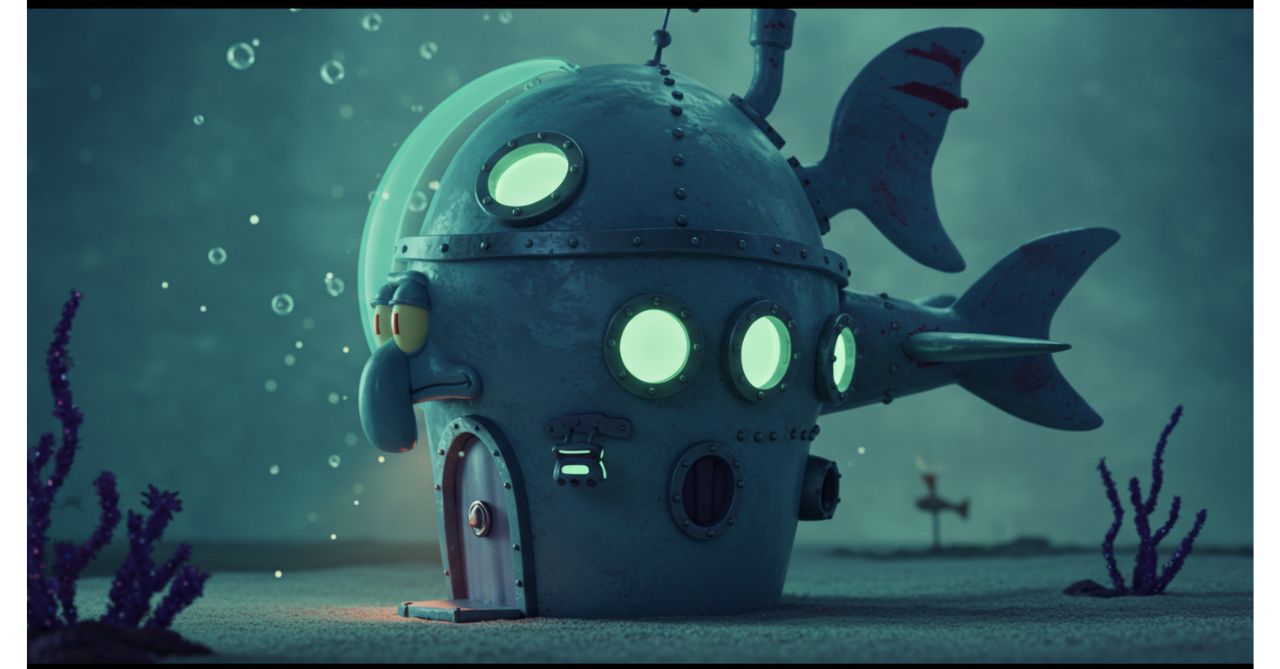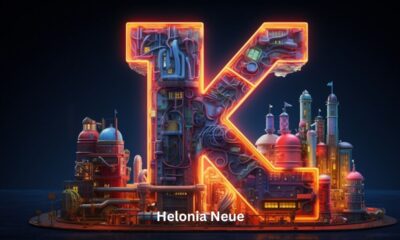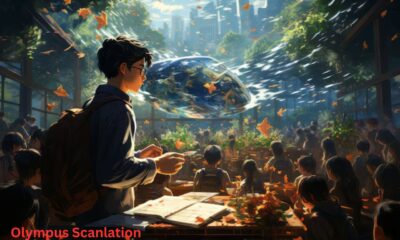Musician
Top Olympus Scanlation: A Pillar in the World of Fan.

Manga enthusiasts around the globe are no strangers to the concept of scanlation – the fan-driven process of scanning, translating, and editing manga for non-Japanese audiences. Among the standout names in this niche community, Top Olympus Scanlation has consistently earned admiration for its quality, commitment, and influence. Whether you’re a casual reader or a dedicated manga fan, exploring the journey of Top Olympus Scanlation offers insight into how fan passion can shape global access to Japanese pop culture.
The Origin of Top Olympus Scanlation
Top Olympus Scanlation didn’t emerge overnight. It was born from the passion of a small group of manga lovers who believed that quality storytelling should not be bound by language barriers. In the early 2010s, when official translations were limited and often delayed, Top Olympus stepped in to fill a vital gap. They focused on unlicensed titles, ensuring that global fans could enjoy series that might otherwise remain inaccessible.
Unlike many other groups that rushed releases, Top Olympus Scanlation distinguished itself by prioritizing translation accuracy, typesetting precision, and reader experience. This attention to detail earned them a loyal following.
What Sets Top Olympus Scanlation Apart?
Several scanlation groups exist, but few match the standards set by Top Olympus Scanlation. Their philosophy is rooted in respect—for both the original creators and the readers. Here’s what makes them stand out:
Exceptional Translation Quality
Top Olympus Scanlation is renowned for maintaining the tone, nuance, and cultural context of the original Japanese dialogue. Their translators often collaborate closely with editors to ensure that nothing is lost or misrepresented.
High Production Values
From clean scans to professional typesetting and redraws, every chapter released by Top Olympus Scanlation feels polished. They often rival official releases in terms of clarity and layout, which is no small feat for a volunteer-run group.
Diverse Manga Catalog
While some scanlation teams stick to mainstream shonen or shojo titles, Top Olympus Scanlation explores a wide array of genres—seinen, slice-of-life, mystery, and even historical fiction. This diversity has helped expand their audience and promote lesser-known gems.
Top Olympus Scanlation’s Most Popular Projects
Throughout its journey, Top Olympus Scanlation has taken on various manga series that have since gained cult status. Some of their standout projects include:
– “Heaven’s Feast”
A dark fantasy series that explores divine conflicts through a political lens, “Heaven’s Feast” became a fan favorite thanks to Olympus’ nuanced translation and stunning image editing. Their work helped the title gain international attention.
– “Sakura Reign”
A high school drama laced with supernatural elements, “Sakura Reign” stands as a prime example of Olympus’ ability to capture emotional depth while navigating complex dialogue.
– “Tales of the Eight-Fold Path”
Blending Buddhist folklore with modern storytelling, this manga was considered too niche for publishers. Thanks to Top Olympus Scanlation, it found a passionate reader base outside Japan.
Legal and Ethical Aspects of Scanlation
It’s impossible to talk about scanlation without addressing its legal gray area. While Top Olympus Scanlation and similar groups focus on unlicensed content, the work technically involves copyright infringement. However, most reputable scanlation teams—including Olympus—voluntarily cease work on a title once it gets licensed in English.
Their intention has never been to profit, but to build bridges. In many cases, scanlation exposure has led to increased demand for official releases, showing how fan translation can benefit creators indirectly.
Community Engagement and Collaboration
Unlike faceless online groups, Top Olympus Scanlation has always prioritized community engagement. Their forums, Discord channels, and social media are alive with discussions, polls, and feedback sessions. They encourage readers to suggest titles, volunteer for roles, and report quality issues.
They also collaborate with other scanlation teams when needed, ensuring that projects continue smoothly even if they can’t manage every aspect in-house. This cooperative spirit is part of what keeps them thriving.
Challenges Faced by Top Olympus Scanlation
Running a scanlation group is no easy task. Top Olympus Scanlation has faced multiple hurdles over the years:
-
Time Constraints
-
: Since all members are volunteers, balancing scanlation with real-life responsibilities is a constant challenge.
-
Technical Limitations
-
: Obtaining high-quality raw scans and editing software requires effort and sometimes, cost.
-
Industry Pushback
-
: As more publishers crack down on scanlations, Olympus and others must navigate increasingly complex legal waters.
Despite these obstacles, the team remains committed, driven by a shared love for manga and a desire to serve their community.
The Future of Top Olympus Scanlation
As manga continues to explode in global popularity, the role of scanlation groups like Top Olympus Scanlation is shifting. With more official translations being released, their focus is narrowing to lesser-known titles and regions still underserved by publishers.
Olympus has also hinted at launching educational initiatives—helping aspiring translators, editors, and letterers hone their skills. This move would mark a new phase in their legacy, where they not only deliver manga but nurture the next generation of scanlators.
Conclusion: A Lasting Impact on the Manga World
Top Olympus Scanlation is more than just a fan group—it’s a movement. Its legacy lies not just in the manga it translated but in the community it built and the standards it set. For readers, it provided access. For publishers, it showed the global appetite for manga. And for future scanlators, it set the gold standard.
As the industry evolves, Top remains a powerful reminder of what passion, skill, and teamwork can achieve—even without official backing. Whether you’re discovering their work for the first time or you’ve been a fan for years, one thing is clear: Olympus has earned its place at the top.
Musician
Squidward House: An Iconic Underwater Landmark

When it comes to animated television, few homes are as recognizable as the Squidward House. Nestled in the underwater city of Bikini Bottom, Squidward’s residence has become a cultural icon thanks to its unique architecture and its grumpy, clarinet-playing occupant. While most viewers focus on SpongeBob’s pineapple house or Patrick’s rock, the Squidward House stands out for its artistic influence and symbolic undertones. In this article, we’ll take a deep dive into everything there is to know about Squidward House—from its design origins to fan theories and its relevance in popular culture.
The Origins of Squidward House
The Squidward House first appeared in the premiere episode of SpongeBob SquarePants in 1999. Created by marine biologist and animator Stephen Hillenburg, the show is packed with imaginative underwater elements. Squidward’s home, designed to resemble a Moai statue from Easter Island, was no random choice. It reflects Squidward’s personality—stoic, serious, and traditional.
Moai statues, known for their long faces and solemn expressions, align perfectly with Squidward’s character. While SpongeBob’s pineapple symbolizes fun and creativity, and Patrick’s rock emphasizes laziness and simplicity, the Squidward House suggests sophistication and a longing for higher culture.
Architectural Style of Squidward House
One of the most fascinating aspects of the Squidward House is its architecture. It stands upright with a prominent brow, nose, and lips—clearly inspired by ancient Polynesian stone sculptures. This gives the house an air of mystery and timelessness. Inside, the décor is just as telling: abstract paintings, classical instruments, and busts of Squidward himself.
The house seems to be built from a single solid piece of stone, although this is clearly stylized for cartoon purposes. From a design perspective, it represents Squidward’s desire to live a refined and cultured life, even if it’s in stark contrast to his quirky neighbors.
Interior Design: A Reflection of Squidward’s Soul
Unlike SpongeBob’s bright and cheerful pineapple, the has a more subdued and elegant interior. The living room often features velvet furniture, wooden floors, and artistic elements. His favorite room is, arguably, the music room—complete with a grand clarinet stand and framed self-portraits.
This deliberate setup inside the reflects his values: order, beauty, and solitude. Every inch of his home is designed to offer a buffer from the chaotic antics of SpongeBob and Patrick. The house is not just a residence; it is a sanctuary for Squidward’s introverted soul.
Squidward House in Fan Theories
Over the years, the Squidward House has inspired numerous fan theories and urban legends. Perhaps the most infamous is the “Creepypasta” known as which refers to a haunted or cursed version of Squidward’s home. Though entirely fictional and unaffiliated with the creators, such stories have kept the intrigue surrounding the Squidward House alive.
Other fans speculate that the placement of the houses—SpongeBob, Squidward, and Patrick all in a row—is a metaphor for life’s stages: childish joy (SpongeBob), adult frustration (Squidward), and carefree oblivion (Patrick). In this framework, the Squidward House represents the burdens of responsibility, misunderstood genius, and unmet aspirations.
Real-World Inspiration for Squidward House
Inspiration for the may have been drawn from actual Easter Island Moai statues, which are shrouded in mystery and cultural significance. These statues were crafted by the Rapa Nui people and are thought to represent ancestral figures or deified chiefs.
There are also life-sized replicas of the Squidward House that exist in theme parks and as tourist attractions. Some fans have even tried to recreate the Squidward House in video games like Minecraft, Sims, and Roblox. The design has transcended the show and become an emblem of a misunderstood character.
Cultural Impact of Squidward House
Despite being a secondary character, and his house have left a lasting impression on pop culture. Memes, merchandise, and fan art featuring the are widespread on social media platforms like Reddit, Twitter, and TikTok. The house symbolizes more than a cartoon location; it represents the adult struggles of creativity, solitude, and societal disconnection.
Interestingly, as more of the show’s audience ages, there’s a growing sense of empathy toward Squidward. His house becomes a relatable space—a retreat from noisy neighbors and overwhelming expectations.
Squidward House in Other Media
Beyond the television series, the has appeared in multiple SpongeBob movies and spin-offs, often maintaining its original design. In The SpongeBob Movie: Sponge Out of Water and The SpongeBob Movie: Sponge on the Run, Squidward’s home briefly serves as a reminder of Bikini Bottom’s quirky charm.
It also appears in video games such as SpongeBob: Battle for Bikini Bottom and SpongeBob SquarePants: The Cosmic Shake. In these games, players can explore the Squidward House, revealing hidden rooms, art collections, and sometimes even Easter eggs referencing Squidward’s failed artistic endeavors.
The Symbolism of Squidward House
If SpongeBob’s pineapple symbolizes joy and imagination, the symbolizes the opposite: restraint, dignity, and the longing to be understood. Its solid, unmoving exterior speaks volumes about Squidward’s own emotional barriers.
The house doesn’t change much throughout the series, just like Squidward’s personality. It’s a symbol of consistency in a chaotic world—a rock in the turbulent ocean of Bikini Bottom life. That, in itself, makes the Squidward House more than just a structure; it becomes a character of its own.
Conclusion:
The may appear to be just a quirky design from an animated show, but it holds much deeper meaning. It serves as a symbol of personality, artistic yearning, and the complex layers that make Squidward such a compelling character. From its Moai-inspired exterior to its art-laden interior, Squidward’s home is a fascinating study in visual storytelling.
Whether you’re a long-time fan of SpongeBob SquarePants or a casual viewer, the next time you see the House, you’ll know it represents much more than a grumpy neighbor’s abode—it’s a monument to the misunderstood artist in all of us.
Musician
Andy Warhol: The Visionary Maestro of Pop Art

Introduction
Andy Warhol, born Andrew Warhola Jr. on August 6, 1928, in Pittsburgh, Pennsylvania, was a transformative figure in the art world. As a leading exponent of the Pop Art movement, Warhol’s innovative approach to art blurred the lines between high culture and mass media. His exploration of consumerism, celebrity, and artistic expression redefined modern art and continues to influence contemporary culture.
Early Life and Influences
Growing up in a working-class neighborhood, Warhol was the youngest of three sons to Slovakian immigrants, Andrej and Julia Warhola. His early fascination with popular culture and media was evident, as he immersed himself in comic books, magazines, and Hollywood films. This early exposure laid the foundation for his future artistic endeavors.
Warhol’s artistic talents emerged during his childhood, leading him to pursue formal education at the Carnegie Institute of Technology (now Carnegie Mellon University). There, he studied pictorial design, honing his skills and developing a unique style that would later become his signature in the art world.
Transition to New York and Commercial Success
In 1949, Warhol moved to New York City, a hub for aspiring artists and creatives. He began his career as a commercial illustrator, working for esteemed magazines such as Vogue and Harper’s Bazaar. His distinctive blotted-line technique and whimsical drawings set him apart, earning him recognition in the advertising industry.
During the 1950s, Warhol’s reputation as a commercial artist flourished. He received numerous awards for his advertisements and illustrations, showcasing his ability to merge art with commerce seamlessly. This period was instrumental in shaping his perspective on consumerism and mass production, themes that would later dominate his artwork.
The Emergence of Pop Art
The 1960s marked a pivotal era in Warhol’s career as he transitioned from commercial art to fine art. Embracing the burgeoning Pop Art movement, Warhol sought to challenge traditional notions of art by incorporating imagery from popular culture. He drew inspiration from everyday objects, advertisements, and celebrities, reflecting the consumer-driven society of the time.
Warhol’s iconic works, such as the Campbell’s Soup Cans and Marilyn Diptych, exemplify his approach to Pop Art. By replicating mundane consumer goods and celebrity portraits, he elevated commonplace subjects to the status of fine art. This technique not only questioned the nature of art but also mirrored the pervasive influence of mass media and consumerism in American life.
The Factory: A Hub of Creativity
In 1962, Warhol established his studio, famously known as “The Factory,” in Manhattan. This space became a vibrant epicenter for artists, musicians, celebrities, and bohemian eccentrics. The Factory was renowned for its collaborative atmosphere, where creativity and experimentation thrived.
Warhol’s approach to art production at The Factory mirrored industrial processes. He employed a team of assistants to mass-produce artworks, challenging the traditional notion of the artist as a solitary creator. This method not only increased the output of his art but also critiqued the commodification of art in a capitalist society.
Exploration of Multimedia Art
Beyond painting, Warhol ventured into various art forms, including filmmaking, photography, and music. His experimental films, such as Chelsea Girls (1966), offered an avant-garde perspective on underground culture and pushed the boundaries of conventional cinema. These films often featured extended takes and improvised performances, challenging traditional narrative structures.
Warhol’s foray into music included managing and producing the experimental rock band The Velvet Underground. Their collaboration resulted in the iconic album The Velvet Underground & Nico, which, despite initial commercial failure, has since been recognized as one of the most influential albums in rock history. Warhol’s involvement in music further exemplified his interdisciplinary approach to art and culture.
Celebrity Portraits and Cultural Commentary
Warhol’s fascination with fame and celebrity culture manifested in his extensive series of celebrity portraits. He immortalized figures such as Marilyn Monroe, Elvis Presley, and Elizabeth Taylor, using vibrant colors and repetitive imagery. These portraits not only celebrated their subjects but also commented on the ephemeral nature of fame and the commodification of public personas.
By reproducing these images multiple times, Warhol highlighted how mass media perpetuates and consumes celebrity images. His work served as a mirror to society’s obsession with fame, prompting viewers to reflect on the superficiality and transience of celebrity status.
The Shooting and Its Aftermath
On June 3, 1968, Valerie Solanas, a radical feminist and writer, shot Warhol at his studio, an event that profoundly impacted him both personally and artistically. The near-fatal incident led to a period of introspection and a shift in his work. While he continued to produce art, there was a noticeable change in his approach, with a renewed focus on themes of mortality and the human condition.
The shooting also heightened Warhol’s awareness of his own vulnerability and the precariousness of life. This experience influenced his later works, which often delved into darker themes and reflected a more somber perspective on existence.
-

 Internet Technology9 months ago
Internet Technology9 months agoBest Alternatives to Reddit Soccer Streams for Live Matches
-

 Sports9 months ago
Sports9 months agoStreamEast: Free Sports Streaming (Pros & Cons)
-

 ART9 months ago
ART9 months agoimagesize:地藏王菩薩 1920×1080 High-Quality Images for Download
-

 Blog10 months ago
Blog10 months agoHelonia Neue – The Future of Typography and Modern Design Innovation
-

 cryptocurrency10 months ago
cryptocurrency10 months agoCrypto30x.com: A Complete Guide to Crypto Trading and Investment Strategies
-

 Internet Technology10 months ago
Internet Technology10 months agoTotallyNDFW: Understanding Its Meaning, Significance, and Impact
-

 Health9 months ago
Health9 months agoProstavive Colibrim: Boost Energy & Vitality Naturally
-

 Home Decor10 months ago
Home Decor10 months agosteampunk lamps for sale at luzdeco.es


